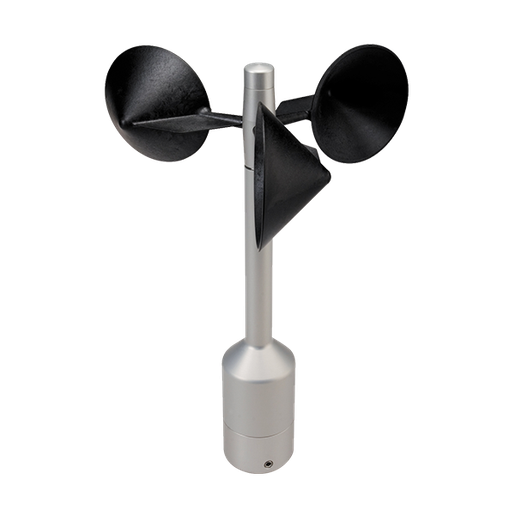How to Keep and Care for Your Anemometer to Guarantee Durability
How to Keep and Care for Your Anemometer to Guarantee Durability
Blog Article
All You Required to Understand About Anemometers: Just How They Function, Why They Issue, and Where to Make use of Them
Anemometers, however commonly forgotten in the realm of scientific tools, play a critical function in different fields, providing important insights into wind rate and air flow patterns. Recognizing the auto mechanics behind these devices is important for anybody looking for to harness the power of this data. From meteorologists tracking weather condition patterns to designers developing structures with wind lots in mind, the applications of anemometers are varied and significant. As we look into the intricacies of anemometer technology, we will reveal the internal workings of these devices, their value, and the essential factors to consider when selecting the best anemometer for specific applications.

Anemometer Fundamentals
A crucial tool made use of to gauge wind rate and direction, the anemometer plays a critical duty in weather forecasting and various sectors. An anemometer usually contains three or four cups that turn in the wind, a vane that directs into the wind, and sensing units to track the rotations or motions. By computing the rotations or movements over a particular time duration, the anemometer can identify wind rate. The vane aids establish wind instructions by directing right into the wind, offering valuable information for climate projecting, air travel, maritime operations, ecological monitoring, and wind energy applications.
There are different kinds of anemometers available, including cup anemometers, vane anemometers, hot-wire anemometers, and sonic anemometers, each with its special functions and applications. Mug anemometers are typically used for standard wind speed measurements, while vane anemometers are favored for directional measurements. Hot-wire anemometers appropriate for reduced airspeeds, and sonic anemometers are suitable for high-precision measurements in study and industrial setups. Comprehending the fundamentals of anemometers is important for exact wind information collection and evaluation across various fields.
Concepts of Anemometer Procedure
Building on the fundamental understanding of anemometer essentials, the concepts of anemometer procedure elucidate the mechanics behind wind speed and direction measurements. Anemometers operate the concept of air movement impacting a sensor, causing it to rotate. Cup anemometers, for example, have 3 or even more cups that record the wind, creating them to rotate much faster as the wind speed boosts. The rotation speed is then transformed right into a wind rate dimension. Vane anemometers, on the other hand, make use of a tail or a probe that straightens itself with the wind instructions, providing a measurement of wind instructions based on the positioning of the sensor. Hot-wire anemometers depend on a warmed cord that cools as wind overlooks it, with the my website price of cooling down determining the wind rate. Ultrasonic anemometers procedure wind speed and instructions by assessing the moment it considers ultrasonic signals to take a trip in between transducers. Recognizing these concepts is essential for accurate and dependable wind measurements in numerous applications.
Importance of Anemometers
Anemometers play a crucial role in measuring wind rate and instructions, offering crucial data for weather condition forecasting, climate studies, environmental surveillance, and aeronautics procedures. Meteorologists rely on anemometers to gather precise wind information, assisting them comprehend weather condition patterns, forecast storms, discover this and issue timely cautions to the public. Wind ranch operators use anemometers to assess wind problems and optimize electricity production from wind generators.
Applications Throughout Numerous Industries
Applications of anemometers cover across diverse sectors, showcasing their versatility and energy beyond meteorology. In the renewable resource industry, anemometers play a critical role in evaluating wind problems for wind ranch placements, guaranteeing ideal power production. Industries like construction and mining utilize anemometers to monitor wind rates, essential for safety methods, especially when functioning at heights or in open-pit mines where solid winds can pose risks. Anemometers are also indispensable in the air travel sector, assisting pilots in recognizing airspeed and wind direction for risk-free liftoffs and landings. The maritime sector gain from anemometers for ship navigating, helping sailors prepare for climate changes and change paths appropriately. In farming, anemometers assist farmers in taking care of crop spraying by offering real-time information on wind rate to stay clear of drift. Anemometers discover applications in A/c systems to optimize airflow and enhance energy performance in buildings. The diverse use situations of anemometers highlight their importance across numerous industries, highlighting their crucial function in enhancing functional safety and security and efficiency (anemometer).

Picking the Right Anemometer for Your Requirements
For basic objectives, a cup anemometer is ideal for gauging wind speed, while a vane anemometer gives wind direction data. Hot-wire anemometers are excellent for low airspeed dimensions, this page and ultrasonic anemometers offer high precision and resilience.

Final Thought
In conclusion, anemometers play a critical function in determining wind rate and instructions throughout different sectors. It is crucial to take into consideration the importance of anemometers in order to make enlightened decisions when picking the most ideal tool for determining wind conditions.
There are various kinds of anemometers available, consisting of cup anemometers, vane anemometers, hot-wire anemometers, and sonic anemometers, each with its one-of-a-kind attributes and applications. Mug anemometers are commonly used for basic wind speed dimensions, while vane anemometers are favored for directional measurements. Hot-wire anemometers are ideal for low airspeeds, and sonic anemometers are perfect for high-precision measurements in research and industrial setups.Structure on the foundational understanding of anemometer basics, the principles of anemometer operation elucidate the mechanics behind wind speed and instructions measurements. For basic objectives, a cup anemometer is suitable for gauging wind rate, while a vane anemometer offers wind instructions data.
Report this page